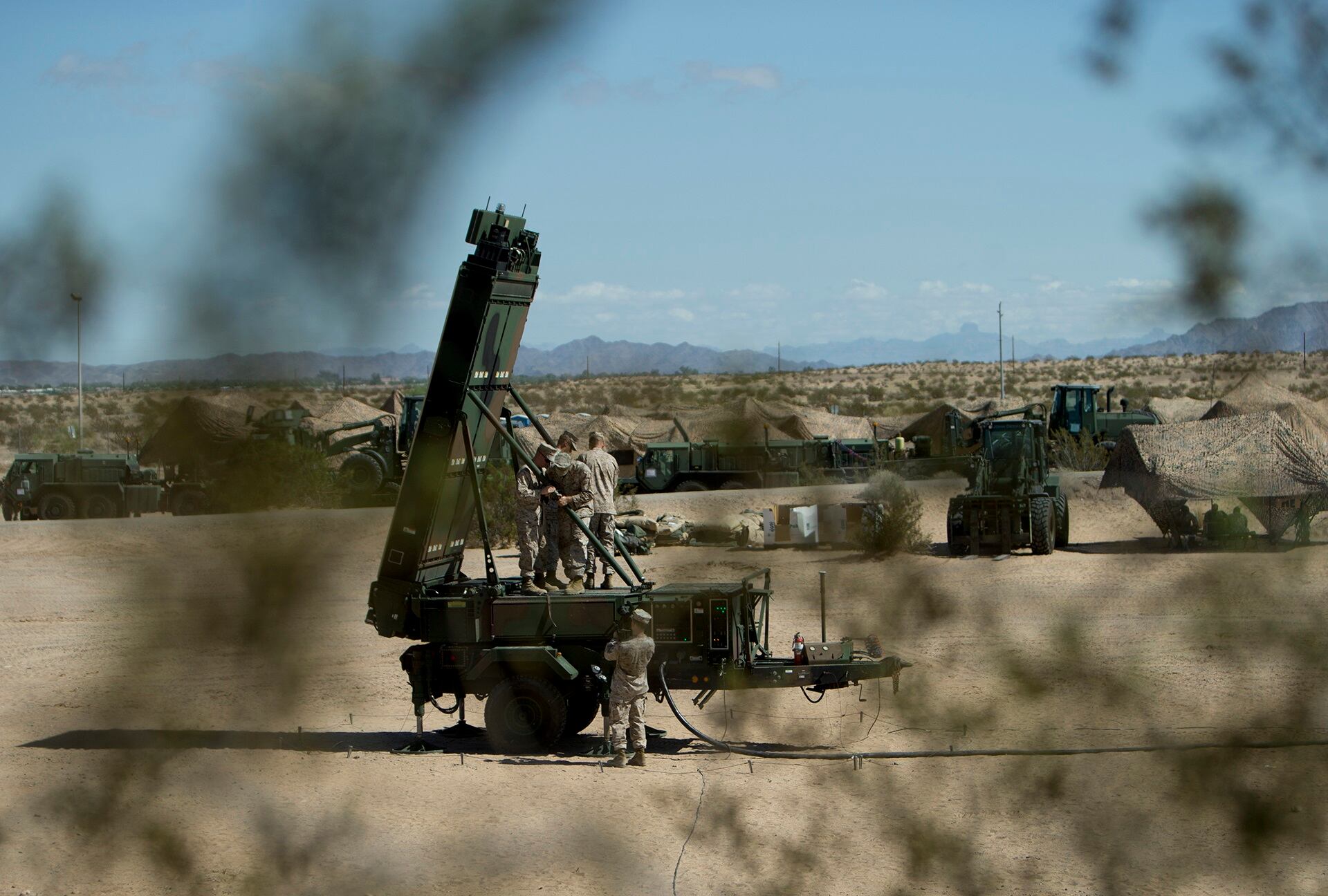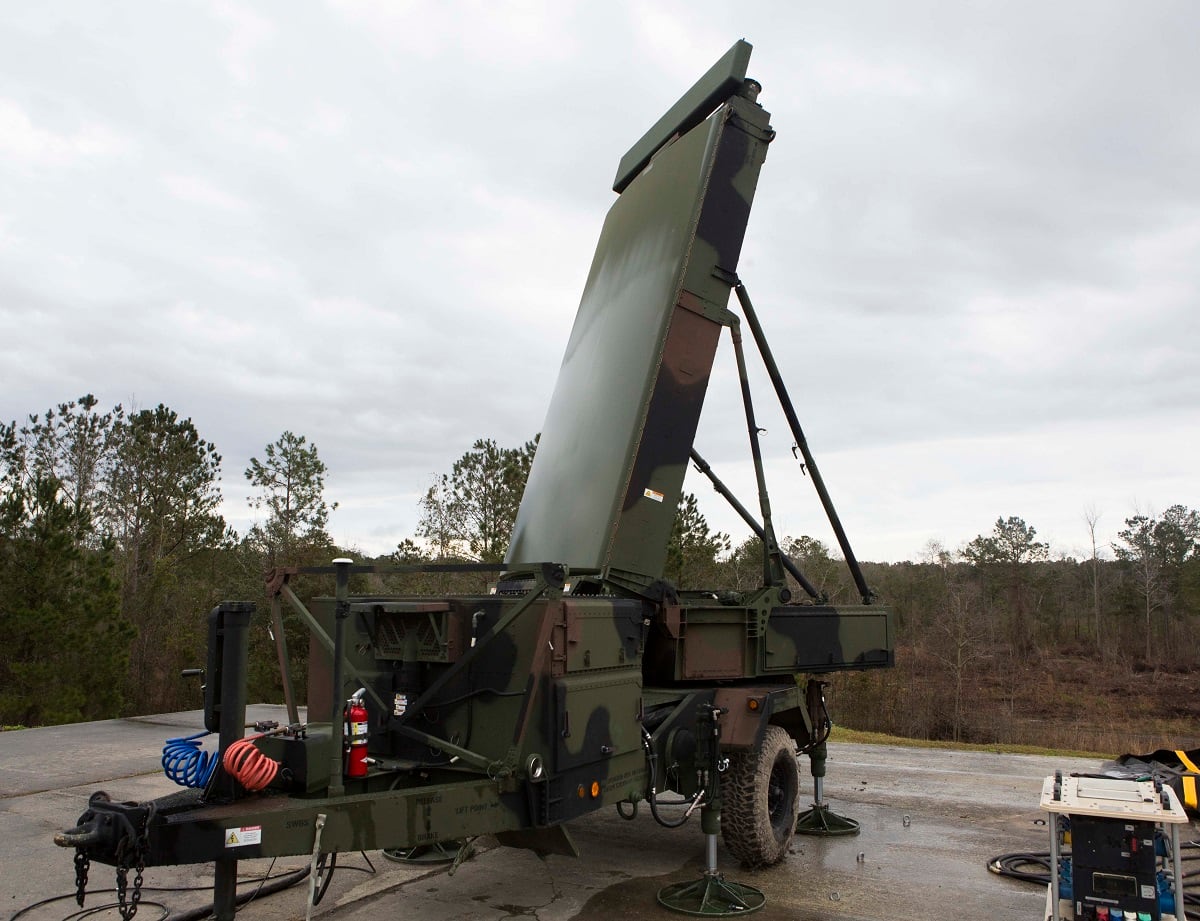As Marine units face evolving drone threats from terrorist organizations and at the same time shore up their air defenses against near-peer air attacks, a few key pieces of gear in the most recent defense bill could vastly strengthen overhead protection.
Until recently, Marines tasked with taking down drones or short-range missiles had to link into a vast array of detection devices and then perform a practically 20th century task to take them out.
Essentially, a Marine with binoculars scans the air for drones while another Marine zeroes in with a Stinger missile ― first fielded in the 1980s but upgraded since ― to shoot down what is often a few hundred dollars’ worth of a patched together, weaponized or surveillance-type commercial drone.
RELATED

But a review of the past five years of Marine Corps budget requests and approvals for two systems, the Ground Based Air Defense-Transformation, or GBAD, and the Ground/Air Task-Oriented Radar, or G/ATOR, have more than doubled in the past five years and are projected to maintain or increase from now until 2022, when a GBAD with a laser component is expected to field.
Beginning as far back as 2013, the Marines have been purchasing the G/ATOR, an advanced radar system that executes the function of a combined five legacy systems.
It can detect airborne missiles, rockets, mortars, artillery and cruise missiles, and, of course, drones.
G/ATOR has a radar antenna and rotating drive system that mounts on a towable trailer. It provides 360-degree scanning and if it detects a threat, it can send a beam to track that threat while it continues scanning other parts of the battlefield.

Marine Corps Commandant Robert B. Neller has previously said that groups of small drones are a likely future threat that troops would encounter more frequently than traditional military aircraft.
Which is exactly what Army, Marine and Russian forces fighting Islamic State groups in Syria have seen.
But spending has been limited to two systems a year until 2016 when that rose to three each year. But that more than doubles to six systems in next year’s budget. For 2020, it’s eight, 2021, seven and 2022 six.
The system will eventually replace the TPS-63 air defense; TPS-73 air traffic control; MPQ-62 short-range air defense; TPQ-46 counterfire target acquisition and UPS-3 target tracking radar systems.
The $225 million in the coming fiscal year budget is more than double what the service was spending five years ago and will continue to rise as more G/ATORs are planned for purchase through at least 2022, according to the budget documents.
That alone shrinks the equipment air defense footprint within the MAGTF, feeding into the increased mobility the service is seeking.
And money is also flowing not only to detecting the panoply of airborne threats, but to find ways to shoot them down from nimble, mobile platforms.
The Marines have also continued funding and upgrades to the GBAD, a combined detection and strike system used by fire units within the low altitude air defense battalions that support the Marine Air Ground Task Force air defense mission.
The dollar figures are lower than the G/ATOR but are rising at about the same rate. The funds have more than doubled in the same period from about $7.5 million to more than $18 million in this year’s request.
That funding has included modifying the Stinger missile to keep it running past its shelf life, in a program known as the Service Life Extension Program. All to keep the capability running as the next version of GBAD is fielded.
Some of which have been shipped into combatant command theaters, providing Marines with a way to sit comfortably protected in a Marine M-ATV, a Mine Resistant Ambush Protected All-Terrain Vehicle, or even split up the equipment between two MRZR, a smaller two-person dune buggy-like off road vehicle.
The advanced version currently fielded has the detection and Stinger strike capability. But the true payoff is expected by fiscal year 2022, when a laser component is expected to field within the new GBAD. That will give a built-in option for Marines to shoot down drones or disrupt other aerial threats either with a laser or with a missile.
But with high electrical power requirements the stronger lasers would likely need the new Joint Light Tactical Vehicle to support their fire needs.
The G/ATOR and GBAD combine through the service’s new Common Aviation Command and Control System. The communication backbone relays the picture captured by the G/ATOR, which can then feed information to the LAAD fire units to shoot down the incoming threat.
Which is somewhat more effective than scanning the sky with binoculars.
Todd South has written about crime, courts, government and the military for multiple publications since 2004 and was named a 2014 Pulitzer finalist for a co-written project on witness intimidation. Todd is a Marine veteran of the Iraq War.





